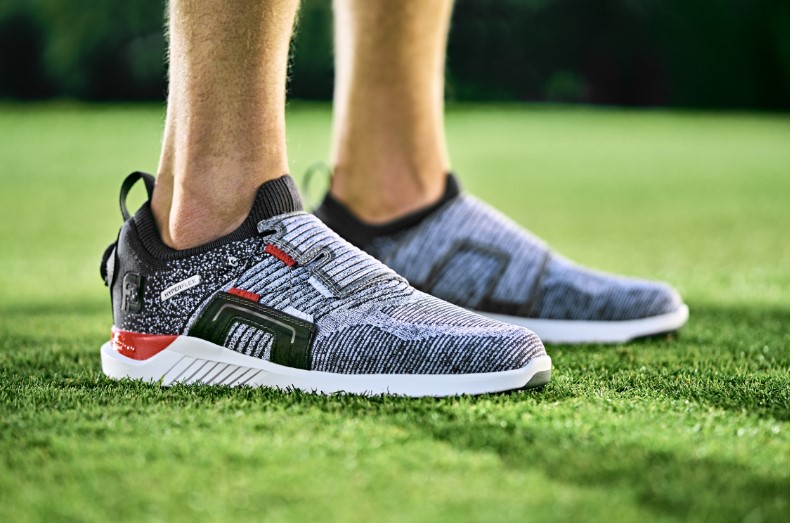Golfing is more than just hitting a ball into a hole. It’s about technique, precision, and yes, the right gear. When you’re out on the green, the type of shoes you wear can significantly impact your game. This article is for all the beginners out there who are starting to discover the joys of golf. We’ll discuss why golf shoes are essential, the different types available, lacing techniques, and how to take care of them.
Do You Need Golf Shoes as an Amateur?
A common question many new golfers have is, “Do I really need specialized golf shoes?” Well, the short answer is, it’s up to you. Regular sneakers might serve you okay for a while, especially if you’re just practicing or playing for fun. However, golf shoes are designed with specific features that help improve grip, stability, and comfort during a game. This can be especially beneficial when playing in wet conditions or on hilly terrains.
Moreover, if you’re serious about improving your game or playing more often, investing in a pair of golf shoes can be a good decision. They can help you maintain better posture, enhance your swing, and even reduce the risk of slipping or injury.
Types of Golf Shoes
- Spiked or Cleated Shoes
These are the traditional choice for many golfers. They come with actual spikes or cleats on the bottom, often made of soft plastic. The spikes offer excellent traction on the golf course, especially during wet conditions. If you’re playing on a hilly course or in a place with frequent rain, spiked shoes can be invaluable. They provide stability during swings and reduce the risk of slipping. Keep in mind, however, that they may not be as comfortable for walking long distances due to the spikes.
- Spikeless Shoes
Spikeless shoes like FootJoy are becoming increasingly popular among both casual and pro golfers. Instead of traditional spikes, they feature a flat outsole with rubber studs or dimples. The primary advantage of these shoes is their versatility. They’re comfortable enough for everyday wear, allowing golfers to transition from the course to other venues without changing shoes. While they might not offer the same level of grip as spiked shoes, they provide ample traction for most conditions.
- Boot Style Golf Shoes
For those who golf in colder or wetter climates, the boot style is worth considering. They’re higher than regular golf shoes, providing additional warmth and protection from the elements. Often made with waterproof materials, they ensure that your feet stay dry even when the course is wet. Their robust design offers excellent support, especially around the ankle, making them an ideal choice for golfers who prioritize comfort and protection against harsh weather conditions.
- Golf Sandals
These are a more unconventional choice but are perfect for hot climates. Golf sandals provide the comfort of open-toed shoes while still offering some of the grip features found in traditional golf shoes. They are breathable and lightweight, making them ideal for summer rounds. However, they might not provide the same level of support or protection as closed shoes, so they’re more suitable for casual rounds or shorter courses.
What Laces to Use
Laces might seem like a minor detail, but they can make a difference in how snugly your golf shoes fit. Traditional cotton laces are commonly used and provide a comfortable fit. However, for those who want something more durable and less prone to loosening during a game, synthetic laces are an excellent choice.
Also, there’s the option of no tie shoelaces for those who want a quicker solution. These laces use a locking system, ensuring your shoes remain snug without the need to tie them constantly. When selecting laces, consider your personal preferences, and think about how often you play.
Maintenance Tips for Golf Shoes
Taking care of your golf shoes ensures they last longer and stay in good condition. After each game, make it a habit to remove any dirt or grass from the soles. If your shoes are wet, let them air dry. Avoid placing them near heaters or in direct sunlight as this can damage the material.
Regularly check the spikes on spiked shoes. If they’re worn out or damaged, replace them. For leather shoes, consider using a conditioner every few months to keep the material supple. Always store your golf shoes in a cool, dry place, preferably in a shoe bag to protect them from dust and other potential damages.
Conclusion
To sum it up, while golf shoes aren’t a strict necessity for beginners, they do offer benefits that can improve your game and overall experience. From providing better grip and stability to ensuring comfort throughout the game, these shoes are designed for the sport. Whether you’re an amateur or planning to go pro, remember to choose the right type for your needs, keep them well-maintained, and, most importantly, enjoy every moment on the green!



